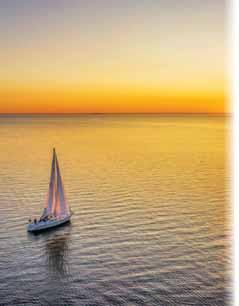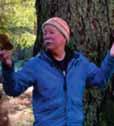






































































































Wow, does Ladysmith ever dig history! What a great celebration of community at the Ladysmith & District Historical Society awards event last Friday. It’s wonderful to see hometown heroes recognized in this special way. Two of the awards resulted from maritime projects: the restoration of the classic sailboat Dorothy, built in Victoria in 1897, and the traditional making of spectacular canoes by Stz'uminus First Nation carver Beau Wagner. Two cultures, a shared appreciation of special skills and mutual respect for the traditions behind both projects — this is what community can look like.
On behalf of the Maritime Museum of BC, we thank the society for choosing to recognize the dedicated volunteers at the Ladysmith Maritime Society. They have meticulously restored the Maritime Museum’s beloved sailboat Dorothy to her original glory from 1897. There is a delightful supplement to the local award. The Dorothy project has also been shortlisted for the prestigious international Classic Boat Award for best restoration in her size category. This award generally goes to a highend professional boatyard and the wealthy boat owner who has lavished funds on a restoration. Who would have thought that a group of unpaid volunteers, donating their time and labouring away in the Car Shop, in a small town on Vancouver Island, would propel Dorothy to the big leagues?
The Maritime Museum of BC and those who appreciate maritime history are so grateful for the skill and dedication of the Ladysmith Maritime Society’s Dorothy crew, led by Robert Lawson. Their local award is so well deserved, and hopefully, there is more to come.
This summer, you will see Dorothy sailing from time to time in Ladysmith Harbour and at maritime events throughout the Salish Sea. We are keen for very young sailors to experience the thrill of sailing aboard a gaff-rigged sailboat built before the Wright Brothers flew. Thank you all. - Angus Matthews, volunteer board member, Maritime Museum of BC
If you would like to support Dorothy’s nomination for the Classic Boat Award, you can vote for Dorothy at https://awards. classicboat.co.uk/vote-now/. Dorothy is the second boat listed in the Restored Sailing Vessel under 40-foot category. Voting closes on March 11.
Letters to the editor can be sent to editor@take5.ca





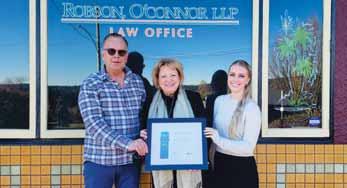
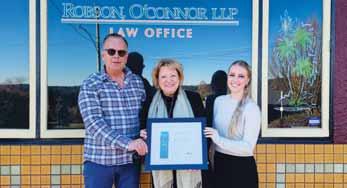














It was a packed house for the fifth annual Ladysmith Heritage Awards at the Ladysmith Eagles Hall on Feb. 23, 2024.
The event opened with speakers Nanaimo & Ladysmith archivist Christine Meutzner, Heritage BC executive director Kirstin Clausen, and Stz'uminus Elder George Seymour “Squtxulenuxw.”
This year’s awards recognized three individuals, a couple and a society that has helped promote and preserve our local heritage.
“We believe it is fitting that we recognize those that have contributed to the preservation and promotion of heritage in our community over the past year,” said Ladysmith & District Historical

Society president Quentin Goodbody. The awards are sponsored by the LDHS and the Town of Ladysmith.
The fi rst award of the night went to Irene Hawthornthwaite for her longterm commitment to preserving local



heritage and nurturing community.
Irene was a Girl Guide leader at North Oyster and a major driver behind the North Oyster Community Centre, where she set up the North Oyster & Area Historical Society Museum.



“It has been fun,” said Hawthornthwaite. “I’ve had a lot of help, and we have such an incredible community to work with. It’s just wonderful.”
The next award went to Esther Sharp for the “Dogwood Dan” Facebook weekly postings about Ladysmith, which informs the community about its heritage. She has made 400 posts with an average of four hours a post required to research the material and prepare the photos.
“Oohs” and “aahs” filled the room as the audience was treated to slides showing the work that Denise Bergquist and Stefan Queitsch completed in their renovation of the Temperance Hotel. Read more about the renovation in this month’s Home and Garden section.
Next up was the multi-award-winning Ladysmith Maritime Society Heritage Vessel Restoration Group for their meticulous refit, under the guidance of Robert Lawson, of the heritage yacht Dorothy, back to her original design.
The Dorothy is owned by the Maritime Museum of BC. Angus Matthews, who is a director of the museum, as well as a previous owner of the boat, made an impassioned plea to Ladysmith Town Council to continue to support the LMS Heritage Boat restoration work so important to maritime history.
The fi nal award of the night went to








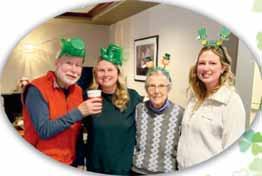
Beau Wagner for sharing Coast Salish teachings through canoe carving, preserving heritage and building community. Master canoe carver Elmer Sampson (Shya'quthut) taught Wagner, who helped to understand the importance of Cedar in Coast Salish culture.
Elmer wished his traditional teachings would be passed on to youths as a way of revitalizing Coast Salish canoe culture and of fostering respect and understanding for Coast Salish knowledge, said Beau.
Ladysmith Secondary School principal Stephen Epp and two students ended the evening by speaking about the school community’s strong cultural connections.
Along with the awards was the launch of Ron Delcourt’s book Magic Alley, with readings by its editor Ed Nicholson. A copy was presented to Nanaimo Airport’s CEO, Dave Devana, as a thank-you for their generous support of the book.
“These awards are a heartfelt expression of recognition and thanks to those members of our community who give of themselves to preserve and share our heritage, thus shaping our community for today and tomorrow,” said Goodbody.
A group of Stz'uminus First Nations (SFN) members are calling for a forensic audit of the Coast Salish Development Group (CSDG). The corporation is the economic arm of the SFN and has extensive interests and holdings that include the Oyster Bay Village, Owls Hollow, Oyster Bay and Raven Point Marina, and Cassidy Lands at the Nanaimo Airport.
Adam Seymour, who represents others in the community, is concerned by what he calls a “lack of communication, a lack of transparency and a lack of community involvement” from the CSDG.
Seymour submitted the request for a forensic audit of CSDC to Band Administrator Trevor Gatzke on September 7, 2023.
The letter states, “We, the undersigned, members of the Coast Salish Development Group request a thorough and independent forensic audit of the fi nancial affairs and operations of the corporation. As valued members and stakeholders of the



Coast Salish Development Corporation, we believe that transparency, accountability and good governance are of paramount importance to ensure the continued success and growth of our organization.”
The letter goes on to request that the forensic audit cover the following areas: an examination of fi nancial transactions, evaluation of expenditures, assessment of procurement practices, review of governance and management and identification of potential fraud or mismanagement.
“We believe that conducting a forensic audit will not only address current concerns but also demonstrate our commitment to transparency and accountability.” The letter asks for access to the audit fi ndings and a detailed report outlining the audit procedures, observations and recommendations. “We also request that a general meeting be convened to discuss the audit results with the membership and provide an opportunity for questions and clari fications.”
But now, almost six months later, there is still no action.
Seymour, who circulated a petition asking for the audit, says he represents more than the 120 people who signed it, saying there are many in the community who feel shut out of the decision-making happening at CSDC. There were more people that wanted to sign it, he says, “but because they work for the Nation, they were afraid they might get targeted and that I was very brave for doing this.”
He also does not agree with the current profit-sharing agreement that gives 80 per cent to CSDC and 20 per cent to the Stz'uminus community and thinks it needs to be reviewed.
“It’s very frustrating because we talk about everybody having a voice, but then you get people in power that just make decisions.”
Seymour refers to the Stz'uminus vision statement that includes “building strong community relationships through meaningful communications.”
“And they are not doing that, and that is the sad part. They don’t communicate with us at all. Nothing’s getting done, and
nothing’s being communicated.”
Forensic audits can be very expensive. Stz'uminus Chief John Elliot says that there are many other issues the leadership is currently focusing on, with housing being an important one.
The new council term started in April 2023. “We are dealing with so many other things in supporting our 1300 members. We will address this further down the road. Leadership has many concerns and issues.”
As for the CSDC 80 percent/20 percent split, Chief Elliot had no comment, but an information meeting with all their departments is planned for early summer for the community.
Seymour wants to be clear that he is not saying that there is anything wrong, but a forensic audit would bring transparency and information “because the people have a right to know.”
It’s early morning, and the Song Bird’s distinctive Easthope engine can be heard as it approaches the Ladysmith Fisherman’s boat ramp. The boat is here to join the Ladysmith Maritime Society’s fleet; the Kirkegaard and their flagship Saravan are already “on the hard”.
The heritage boats have been evicted from the Oyster Bay Marina despite just last month’s Town of Ladysmith’s offer to cover the cost of their moorage and the 20 feet of dock space.
Ray Gauthier, CEO of Coast Salish Development Group, expressed a strong desire for the removal of LMS from the marina. “We don’t want their presence here,” he said and cited a lack of respect by LMS members towards the marina staff and that there was no benefit to the marina for LMS to operate here.
LMS rebu ffs their accusation.
When asked if the Town of Ladysmith was doing anything to assist the LMS with the eviction of the heritage boats or to ensure the non-profit society’s future, the response was “Due to legal action taken by LMS towards the Town, we are unable to comment.”
Richard Wiefelspuett, executive director of LMS, says he has seen this before. “Everybody stands back and says, ‘no it’s the Town’s problem. No, it’s the First Nations problem. No, it’s the
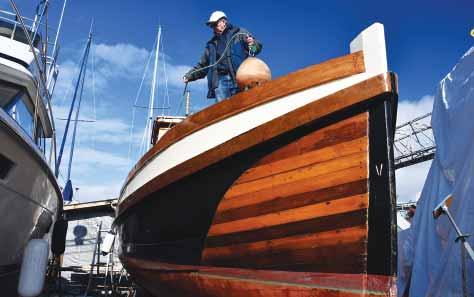
Province’s problem.’ And so on.”
For LMS president Marnie Craig, it’s all about “trying to shape our future.” One of the more interesting opportunities is the Rainbow skiff, considered to be the oldest surviving boat of its type. Once a static display is in their museum, the plan is to restore it to the point that it can go in the water again.
Back at the boatyard, Owen Pallot is clearing the decks of the Saravan. He has worked on these boats for eight years and knows them well. They will be okay on the hard until April, when the wood will start to dry out.
“The Maritimer is sitting on a trailer and will be stored with a LMS member. The workboat Lady B will likely be sold. And for the Song Bird, this may very well be goodbye, as the Columbia fishing boat may be going elsewhere.”
The LMS Boat Restoration Group, which operates out of the former Comox Logging & Rail Co. Car Shop, is a place where guys can go and work on projects together. “It will be sad if it all goes away,” says Owen. “And sad for the community as well.”
The Ladysmith Lions Club (LLC) has been instrumental in keeping the Ladysmith Agricultural Hall (Aggie Hall) functional for many years. In 1941 the LLC leased Aggie Hall and held the fi rst Christmas Tree Party for children. Other Ag-
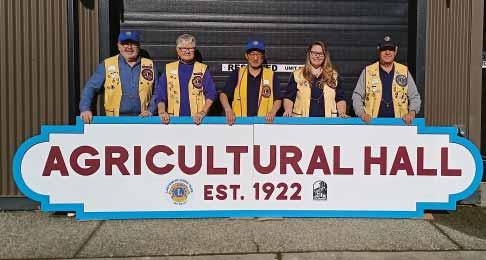
gie Hall Lion Club activities included indoor sports; with the purchase of 300 roller skates by LLC they introduced roller skating. In the “50’s there were the Saturday night dances and Minstrel shows; LLC spent $10,000 on Aggie Halls floor.
Through the 100-year history of the Agricultural Hall, it has never had proper signage. With the help of the Agricultural Hall Celebration Committee, spearheaded by the Ladysmith & District Historical Society and the Town of Ladysmith, it was decided that it was time to adorn this historic building with a celebrative sign.
Chris Barfoot, the director of Ladysmith, Parks, Rec & Culture, while not able to give a date for the installation of the sign, said it would be happening soon.
The sign was completed September 2023. The cost was approximately $1400, with the Aggie Committee putting $400 towards the cost and the club putting up the balance.

You don’t have to be a miner to rent a room at the newly renovated Temperance Hotel in Ladysmith these days. However, owners Denise Bergquist and Stefan Queitsch pay homage to miners in their 6000 sq ft mixed-use building.
The couple recently received a Ladysmith Heritage Award for “rescuing the Temperance Hotel through extensive renovation... a labour of love which goes a long way to help preserve the heritage aspect of downtown Ladysmith.”
Indeed, the hotel represents the type of commercial building that predominated in Ladysmith in its earliest days, and if those walls could talk, they would tell the story of this community.
The Uren family built the hotel in Wellington and moved it to Ladysmith in 1900. It was named the Temperance

as there was no selling of liquor on the premises. The rooms would only be let to miners because they bathed every day. Later on, the hotel housed strikebreakers during the Great Strike of 1912-1914 and was bombed. During the Spanish Flu of 1918-1919, it served as a ward when the hospital over flowed. Bought by the Legion in 1944, it was known as The Brownlow Block after its owner, Walter Brownlow.
The building is approx. 6,000 sq ft with five rental units and two commercial lease spaces with the Ladysmith Art Gallery in one of them. Another space of approximately 800 feet is available on the ground floor facing First Avenue.
"I've always wanted to do real estate and renos but never really had an opportunity," said Denise.

Stefan who has a plumbing company, and construction experience, also wanted to do a project. The couple had only recently met when they found out that friends of theirs were selling the building. "It became our Covid project, and three and a half years later, here we are," she laughs. The couple, who have fulltime jobs, spent every weekend and evening working on the building.
Along with the hard work, there were
 Clockwise: Temperance Hotel in 1913. Photo: Ladysmith Archives. Unit showing tiger-pattern wood flooring. Tin ceiling. Photos: Quentin Goodbody
Clockwise: Temperance Hotel in 1913. Photo: Ladysmith Archives. Unit showing tiger-pattern wood flooring. Tin ceiling. Photos: Quentin Goodbody













challenges ranging from inclement weather to COVID, which affected supplies, deliveries and caused materials costs to skyrocket.
But the foundation was the most challenging by far. The building's foundation was crumbling, and there were places that had no support. "You have to build on a good foundation. That's where we spent most of our time. We thought we'd never get out of there, " recalls Denise.
“And that's why we think a lot of the




people watching the renovation thought we weren't getting anywhere. It was slow motion down there.”
The couple estimated hand-dug and packed out 400 bucketfuls of dirt in their excavation. “It took a long time. And then, the exterior work began to reframe the whole building. So, it all takes time, and then you get to start doing the fun stu ff,” she says.
Some of the features they liked the most were bringing the original wood back to life in the interior spaces and



using the heavy timbers for the exterior stairs and decks. The gentle mix of the old with the new, not just with the wood but with the design around lighting, tile choices, furniture and colour, puts some history back inside the units.
To keep heritage elements, they would search for months. "If we were looking at fi replaces, we looked to fi nd the trims that would work. And everything that we bought was like, we love this, but does it fit with the hotel,” said Stefan.
The result is a heritage building with a modern touch. The couple paid signi ficant attention to heritage details and retained the original materials wherever possible. The upstairs hallway features a stunning tin ceiling. Featured walls and floors come from reclaimed lumber from the building. The result is spectacular flooring. In one unit, the old paint was not removed completely from the wood. The result is a tiger-pattern floor.
It was a roller coaster ride says Denise. “There was blood; there were tears; there was lots of laughter, though. We're not a big company. We're just two people wanting to make it better.”


What helped them keep going was the community support for the project. “Special thanks to all our Cheerleaders who messaged or walked by and lifted us up throughout the project,” said Denise. The couple also thank Rick from Red's Emporium for all his help and support and the Ladysmith Art Gallery “for being such patient, gracious tenants throughout our construction.”
“It is basically a brand-new building, with all new plumbing, electrical, everything,” says Stefan who is a fan of old movies and westerns. “We love the heritage aspects of this building.”
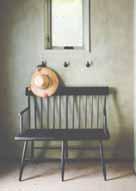
















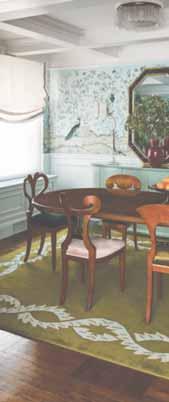











Spring arrives on March 19, and gardeners in the Cowichan Valley are buzzing with anticipation, awaiting the opportunity to get into their beloved gardens and prepare for the 2024 garden season.
Here’s how to prep your garden for a bountiful and beautiful season:
Tools - Clean and disinfect tools to eliminate dirt, disease buildup, and rust and debris accumulated during the winter months. Sharpen blades to ensure clean cuts and smooth operation. Wellmaintained garden tools are essential for efficient gardening and healthy plants.
Pruning - Proper pruning techniques encourage healthy growth and abundant blooms. Prune early blooming de-

ciduous shrubs like forsythia after they fi nish flowering. Mid-March, attend to hybrid tea and floribunda roses; apply a handful of organic rose food to the soil. Prune out any winter-damaged hedging.
For fruit trees and bushes, complete pruning by the end of March or before they begin to bud. For shrubs that bloom on new wood, early spring is the ideal time. Do not prune shrubs that have al-
ready set their buds for the season, as this can impact flowering.
Garden Bed TLC - Clear out debris, pull weeds and assess soil health. Put debris in your compost pile except leaves from diseased plants.
Trim - Trim back remaining foliage on perennials and ornamental grasses from the previous season to make way for new growth. Be mindful not to damage emerging buds or new shoots while pruning.
Feeding - Provide a nutrient boost to your plants early in the season with organic fertilizer such as blood meal, bone meal or kelp. Use a formulation suited to your specific plants and apply per instructions for optimal results.
Spring offers a window of opportunity to divide and transplant perennials. Rejuvenate overcrowded beds and relocate plants as needed. Plant new perennials and summer bulbs such as begonias, lilies and nerines. March is a good time to move trees and shrubs. Evergreens, including hedges, plant in March and mulch with well-rotted compost or manure.
Apply two to three inches of mulch beneath trees and shrubs to prevent weed growth. Use organic materials like, compost or mulched leaves to enrich soil and maintain fertility. For perennial beds, keep layers thin around spring bulbs and plants like irises. Avoid mulch contact with tree and shrub trunks to prevent rot and disease.
Follow these tips and your garden will thrive and delight all season long.
Roll up your sleeves, grab your gardening gloves and get into your garden to usher in spring 2024!

Michael Abdelmesseh is a Canadian Red Seal-endorsed landscape horticulturist. Michael and his wife, Lynn, are the co-owners of Into the Garden Inc., a landscaping and pond services company in Ladysmith — beautifying gardens and ponds from Cobble Hill to Nanaimo. Visit www.intothegarden.ca or call 250-466-9339.

In the heart of a tranquil forest, beneath the towering canopy and amidst the soft rustle of leaves, lies a hidden world of enchanting intricacies — the mycorrhizal network. Here, beneath the forest floor, a delicate dance unfolds as mushrooms weave their mycelial threads, creating a harmonious symphony that goes unnoticed by many.
Mushrooms, often overlooked as mere woodland adornments, are the ethereal architects of a complex underground community. Their mycorrhizal networks form an intricate web of connection, linking trees, plants and fungi in a silent collaboration that sustains the entire forest ecosystem. As we delve into the wondrous world of mycelium, we uncover a tapestry of life that thrives beneath our feet.
Picture a mushroom cap, gently emerging from the forest floor like an umbrella unfurling in the rain. Beneath the cap lies the mycelium — a network of fi ne, thread-like structures that extend in a mesmerizing dance through the soil. This mycelial ballet is not just an artistic display; it’s a crucial mechanism that fosters a symbiotic relation-



ship with the surrounding flora.
Mycorrhizal fungi form partnerships with trees, exchanging nutrients in a mutually beneficial dance. The fungi extend their mycelial network, delicately intertwining with the roots of trees. This connection allows for the exchange of essential nutrients, such as phosphorus and nitrogen, nurturing the trees and facilitating their growth. In return, the trees provide the fungi with sugars produced through photosynthesis. It’s a silent pact, a gentle give-and-take that
sustains the entire forest community.
As the mycorrhizal network expands, it connects not only trees but also a myriad of plants and fungi, creating an interconnected ecosystem beneath the surface. This unseen collaboration allows for the sharing of resources, information and even warnings about potential threats. In this vast network, mushrooms act as nature’s messengers, silently communicating through their mycelium.
The forest floor becomes a realm of interdependence, where the mycorrhizal network serves as a binding force, fostering resilience and balance. It’s a reminder that beauty exists not just in what meets the eye but in the quiet, intricate workings of nature beneath our feet.
So, the next time you fi nd yourself wandering through a woodland sanctuary, take a moment to appreciate the subtle magic unfolding beneath the surface. The mycorrhizal symphony, conducted by mushrooms and their delicate mycelium, is a testament to the intricate dance of life that surrounds us — a dance that whispers of harmony, balance and the interconnected beauty of the natural world.



Since 2006, volunteers have gardened on the Kiwi Cove Lodge grounds to grow food for the Ladysmith Food Bank. Each year, we strive to increase our yields by improving soil fertility and texture, reducing weeds and preventing pests and diseases, and each year, we make progress. For each of the past few years, the garden has provided 4,000 pounds of fresh-picked organic vegetables to the food bank. We’d like to share with you some of the practices we follow to achieve our goals.
Unless your soil is compacted, no-

till gardening is the ideal, as this will protect the vital soil food web. I know from experience that soil loosened with a broad fork rather than pulverized with a tiller grows superior vegetables. We avoid walking on and compacting the garden beds by laying two-foot-wide pathways, edged with wooden cribbing. We line the pathways with black landscape fabric (Lumite) and top them with coarse bark mulch to prevent weeds from growing. The bark mulch is good for two years, before it eventually breaks down.

Last year, we were thrilled to see lots of earthworms in the soil. The presence of tunnelling earthworms indicates a fertile soil that is well aerated and of good texture. Structurally soil is 50 per cent air and water spaces and 50 per cent solid mineral particles. Ideally, organic matter (humus) makes up five per cent of the solids, so we are always adding organic matter such as compost, manure and shredded leaves to the soil.
Sandy soil is easy to work, but it has poor nutrient quality and dries out fast. Clay soil is harder to work; it holds wa-

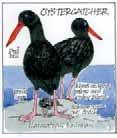






ter and nutrients but drains poorly and compacts easily. The ideal we aim for is a sandy loam made up of 40 per cent sand, 40 per cent silt and 20 per cent clay. You can suspend a soil sample in water in a mason jar and let it settle out to see what you have got in the resulting layers.
The ideal for growing most vegetables and herbs is a pH in the range of 6.3 to 6.8. Potatoes, tomatoes, blueberries and strawberries prefer a lower range (5.5) on the acidic side. Use a simple strip test, available from your local garden centre, to determine the pH of your soil. Add lime to raise pH. Add powdered sulphur to lower pH.
Manure is a valuable fertilizer that provides high levels of nitrogen and other nutrients. We are blessed to receive donations of local horse or cow manure, which we age before using. We get a large pile delivered in late fall, and we apply it to the beds in early spring. Since we grow intensively in our 160-feet-by-40-feet garden plot, this removes a lot of nutrients from the soil. We need adequate levels of macronutrients: nitrogen (N), phosphorus (P) and potassium (K) and a healthy dash of micronutrients (Ca, Mg, Fe, Zn Bo, Cu, Mn). Calcium and magnesium are needed for the uptake and metabolization of nutrients, so we dust beds with dolomite lime each year in the fall. The plants will tell us of any nutrient imbalances, such as blossom end rot of tomatoes, which indicates calcium deficiency, or poor beet growth, which tells of a pH imbalance or lack of boron in the soil.
Last year, we used free wooden pallets to build a four-bin compost system, and we filled it with layers of weeds, herbaceous waste, grass clippings, seaweed and leaves. We activated the piles by dampening the layers with water and adding fresh manure as the pile was being built.
We protect our soil from harsh winter conditions by sowing green cover crops, which prevent the soil from eroding from heavy rains, suppress weeds and feed microbes in the soil during the dormant season. Last year, we sowed a mix of hairy vetch, field pea and fall rye in October. We will turn this under one month before planting begins in spring, which adds nitrogen when and where we most need it. One ounce of seed covers 50 square feet.
Nature abhors a vacuum, so we try to avoid leaving the soil bare. We mulch with shredded big leaf maple leaves from the Kiwi Cove grounds, up to a two-inch maximum thickness. We try to prevent any weeds from going to seed. We also use Lumite, lumber tarps and flattened cardboard boxes to smother weeds. Many hands make light work when it comes to weeding!
Our garden beds are designed in blocks so that we can practise crop rotation to avoid the build-up of pests and diseases. We avoid growing the same plant family in the same place from year to year. We have had problems with flea beetles eating holes in the leaves of arugula, radishes and turnips, so we use cloche tunnels covered with Reemay. We plant flowers, such as cosmos, and herbs around the garden, which attract beneficial insects, such as parasitic wasps and hover flies, and pollinators to increase our yields.
Our garden is an opportunity for hands-on learning in a beautiful setting by the ocean. We are always looking for more volunteers, and you will take home a bouquet of beautiful flowers from the garden every week. If you want to join us, call Bill Tilland at 250-924-5269.
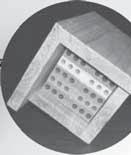
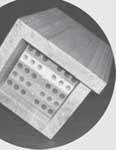










Open Mics offer a platform for aspiring entertainers to showcase their talent, whether it’s playing an instrument, singing, songwriting, poetry or even stand-up comedy. These events provide a welcoming and nonjudgemental space where everyone, regardless of their experience level, can take the stage and share their passion to a live audience.
Ladysmith’s Hardwick Hall has been hosting an Open Mic for the past 18 years, with a brief pause during COVID. Spearheaded by Rev. Douglas Astle and Bob Pinchbeck and currently emceed by Christopher Iverson, Hardwick Hall’s
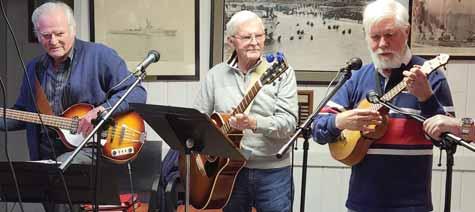
Open Mic has become a cornerstone of our local community. Al Restall ensures that performers sound their best, while Sharon Onciul provides refreshments with all donations now contributing to the renovation and update of Hardwick Hall for community use.
Chris tells us, “Although in the past all donations were for the Food Bank, currently all the funds raised, by donation, are going towards the greater fundraising goal to renovate and update Hardwick Hall for community use. The goal


a year ago was $50,000, and today, we have raised $25,000 of that goal.”
Having attended Hardwick Hall’s Open Mic myself, I can attest to the warm and supportive atmosphere cultivated by both performers and audience members. It’s not just about the music; it’s about fostering connections and celebrating the diverse talents within our community. Plus, knowing that your donations are contributing to a worthy cause adds an extra layer of satisfaction to the experience.

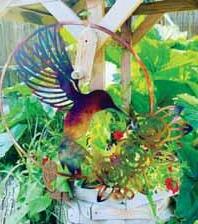




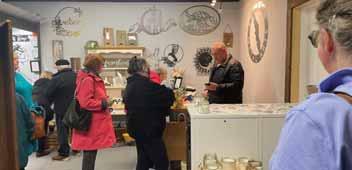
Hardwick Hall’s Open Mic is every fourth Saturday of the month at 7 p.m., at 232 High Street, Ladysmith.
If you are in the mood for live entertainment on a different day, head over to the Chemainus Legion for the Chemainus Valley Cultural Arts Society (CVCAS) Open Mic. Bob Johns has been organizing the Open Mic and invites the community to experience live entertainment with a stage, sound system and audience. You are invited to come and perform or enjoy music, maybe some dancing and the meat draw.
Chemainus Legion’s Open Mic is every fi rst Saturday of the month, from 3 p.m. to 6 p.m.
Island Metal Arts is a family owned and operated business. The beginnings for Michelle and Ken Dore in the metal art business began in 2017 from their home in Colwood, BC, where their focus was on mail order and a few craft fairs. In 2021, the family made a pivotal move to a larger property on Koksilah Road in picturesque Cowichan Bay where they could not only realize their dream of a rural lifestyle but also expand their home-based business. With a much larger shop, as well as a gallery on site, which is open to the public, Michelle says, “The gallery sets them apart from other similar businesses and offshore competition.”
Michelle and Ken’s respective backgrounds in autobody





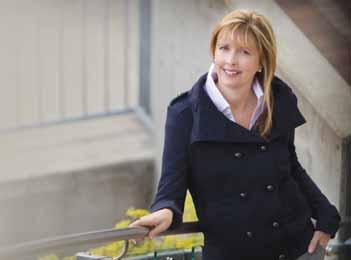

management and design/manufacturing in a variety of mediums, including composites, wood, concrete and steel, add a unique blend to their craft. Their sons, Sam, Chase and Kade, participate in the making and the sales of the metal art as well.
Their reputation has grown over the past seven years; the business has flourished and now has a strong reputation of being innovative, providing heirloom-quality pieces to their valued customers, and all the while, the couple maintains a family-fi rst lifestyle for their children.
When asked where they get their inspiration, Michelle and Ken say, “It’s all about family. It’s not just about ours, but our customers and their families too. It really feels good knowing that so many people will adorn their home or will receive our metal art as gifts for some of their most memorable occasions.”
In an era where mass production often overshadows artisanal craftsmanship, Island Metal Arts stands as a testament to the enduring value of handmade excellence and the power of familial bonds. Whether browsing their website or visiting their Cowichan Bay location, patrons are greeted with a warm welcome and a wealth of creative inspiration.
Diyet & The Love Soldiers is playing at the Port Theatre on March 6. You will enjoy this music described as alternative country, folk, roots and traditional with catchy melodies and stories deeply rooted in Diyet’s Indigenous world view and northern life. Diyet sings in both English and Southern Tutchone (her native language) and plays bass guitar. For more info call 250-754-8550.







The Ladysmith Maritime Society’s Heritage Boat Restoration Group is working on a skiff that has close ties to the Dorothy, the 30-foot sailboat they restored to worldwide accolades.
Coast Salish Master Carver John Marston donated the skiff to the BC Maritime Museum, where it will become the tender for the Dorothy once the restoration is complete this spring.
The ski ff was built by the son of the man who built Dorothy’s original skiff in 1895 and is in remarkable condition for its age. It will be ready in the spring to take to the water as Dorothy’s tender.
Marston came across the ski ff about seven years ago. “I love old wooden boats and had been searching out an old lapstrake as a project, or if only to preserve it for the future.” These historical wooden boats are visual representations of the skills and craftsmanship found throughout the coast, he said.
“I view each one as the few historical

remnants left from the early massive old-growth logging during the time of wooden boat construction.”
Marston says the preservation of old dugouts has been very important work. The era in which both types of watercraft dominated the waterways began to diminish around the same time. This often leads to connections: where there might be an old wooden row boat, there will often be a dugout.
Marston was given the ski ff by a family in Saanich who had owned it since 1940. It was built sometime between 1915 and 1930 by a Victoria boatbuilder, David Thomas Jones, on the same moulds as Dorothy’s original skiff, which was built by his father, Thomas Compton Jones, in 1895, at their shop in


Victoria. The skiff includes its original spoon oars with copper tips. The father and son built a wide range of craft including rowboats, racing yachts, sealing schooners and power launches.
“Father and son had built these two boats at different parts of their lives, and it was a perfect opportunity for the history of boatbuilding to make this connection and unite the sailboat and skiff I’m happy to have played a small part,” says Marston, who enjoys visiting the LMS shop and seeing the boats being worked on. “The Dorothy is an absolutely stunning boat. The work that has been done so far is an inspiration. The detail and foresight of preservation is a lasting legacy for everyone to enjoy and marvel at.”





There has been a flurry of legislative activity from the Province that affects local government. Although much of this housing-related legislation is directed at municipalities with a population greater than 10,000, there are impacts for electoral areas.
For this Director’s Notes, I will focus on Bill 35 “Short Term Rental Accommodations Act” from an electoral area lens. The intent of this legislation is to increase housing availability by regulating and restricting short-term rentals. The act comes into force on May 1st of this year.
Current bylaws in Area A prohibit short-term rentals and allow only bedand-breakfast type in some areas. However, some choose to operate short-term

rentals in our community. Notably, this legislation does not necessarily apply to electoral areas, unless they choose to opt-in. So, for now, the bylaws on short-term rentals in Area A will stay the same.
The new legislation limits short termrentals to the host’s primary residence plus one secondary suite or accessory building. The Province will create a registry of short-term rentals across BC in which all hosts and platforms (e.g., Airbnb) must register. An information sharing system will result in all BC listing information being shared with the provincial and local governments. Further, short-term rental platforms must only list rentals that have a valid business licence or a provincial registry number. So, if you have a short-term rental, you must register it to use the online platforms and this information can



be shared with provincial and local governments.
In addition, regional districts are being given the power to regulate businesses through licencing. This includes home-based businesses. Further, fi nes can now be increased to $50,000 or up to $3,000 per day for bylaw infractions, which gives local governments greater power to enforce infractions of this act and other bylaws. At the provincial level, a compliance and enforcement unit will enforce provincial requirements. Local bylaw compliance will still be the responsibility of local government.
I know this is a dry read. Thank you to those of you who made it this far. I think it’s important to understand a few decisions will be made at the regional district for the electoral areas:
• Do we want to regulate businesses through licencing?
• Do we want to allow certain types of short-term rentals besides B&Bs?
• Do we want to opt-in to this provincial framework?
Opinions will vary on the increased power to enforce bylaws through increased fi nes and to regulate businesses. Some may wish to allow regulated, nonB&B, short-term rentals in our area. Some will be concerned that this may negatively affect housing. The Regional District of Nanaimo is yet to decide whether they will provide a business licencing service and whether to opt-in to this provincial regulatory decision. At this time, RDN staff recommend that we do not opt-in to this provincial regulation and do not offer a business licencing service for 2024. I wanted to let you know that those decisions are on the horizon.
I would love to hear your thoughts on this and all things related to our community. Email jessica.stanley@rdn.bc.bc or phone 250-268-7359.
How is it that North Oyster and the Diamond can have one of the largest





percentage increases in CVRD property taxes yet have one of the lowest increases in actual dollars? Yes, that’s right; at the time of writing, Area H is at 25 per cent, well above the average for the CVRD of 19 per cent. The breakdown of the 19.33 per cent is as follows: core services, 10.35 per cent (3.39 per cent relates to parkland acquisition change); regular supplementals, 1.78 per cent; regional recreation, 6.17 per cent; library, 0.77 per cent; and transit, 0.26 per cent. Yet, based on the actual dollar increase of $187 for the average property in Area H, the actual dollar amount is the lowest for all of the CVRD electoral areas.
How can this be explained? As usual, the devil is in the details.
First, it is important to compare “apples to apples.” Often, the CVRD reports increases based on average property values. However, as average property values vary between electoral areas, the range is from $793,685 in Area E (Sahtlam/Glenora) to $1,084,150 in Area I (Youbou) (note, Area H is $883,296). Any comparison of tax increases based on average property values is not “apples to apples.”
The CVRD also reports on the increase based on “per $100,000 of assessed value.” For complete information, see Schedule D (CVRD homepage > Services > Finances > Draft Budget 2024 > Schedule D). This is the closest “apples to apples” comparison, sort of (more on that later). The increases range from Area H’s (North Oyster/Diamond) $125.89 per $100,000 to Area D’s (Cowichan Bay) $199.89 per $100,000.
This is when the “sort of” comes into effect as the services differ between electoral areas. This is best illustrated by comparing services for each area. Schedule D provides the details and shows the difference. For example, other areas have services such as transit and grant-in-aid; Area H does not.
However, despite the explanation about how Area H fared compared to other electoral areas, the real issue is the size of the increase. It is a long way from the 3.5 per cent mandate that the Board set for core services in the spring of 2023. With that direction, staff needed to provide a business case for any core service exceeding the 3.5 percent mandate. Ninety-two per cent of the CVRD

functions were able to make this mandate. However, for the divisions not able to meet the mandate, the biggest reasons were increases to contractual obligations and the adverse effect should service levels be reduced. Staff provided the top priority business cases, which added up to an 11.68 per cent increase. Each business case was carefully reviewed, and after committee decisions were made, the total increase for the core budget and supplementals came to about nine per cent (note, supplementals are for anything “new”). These are not necessarily optional budget items as some are meant to ensure programs are adequately funded.
Then, there is the impact of the threeyear phase in regional recreation (a result of the 2022 referendum). This increase is for year two and is 6.17 per cent. As well, regional parkland acquisition added another 3.39 per cent. Regional parkland acquisition also came from a referendum in 2008. It had been reduced in annual funding for years; this increase provides full funding.
Lastly, there is the increase for Area H Community Parks. Part of the increase


is based on a recommendation from the Parks Advisory Commission to start setting aside $10,000/year in reserves for the future. Plus, an added amount of $4,000/year is set aside for roadside trail maintenance.
However, this article illustrates that percentages do not tell the whole story. How does all of this translate into dollars? The following are for the services of Area H with the six largest dollar increases (per $100,000): regional recreation, $10; regional parkland acquisition, $5; general government, $2.01; Vancouver Island Regional Library (VIRL), $2.25 (note, the CVRD has no control over the VIRL budget); solid waste complex, $1.53; and community parks, $1.04.
All of this information makes up the draft budget for 2024. Final approval of the budget comes in a few weeks. The fi nal budget information will be in the flyer that BC Assessment includes with the property tax notice. That will provide the fi nal numbers.
In closing, I would like to thank all who came to the Town Hall in February. There were a lot of topics to cover and lots of questions, and it easily filled the two hours. One of the topics of much interest was the recent housing legislation Bill 44 (Residential Development). The upcoming April edition of the TAKE 5 will be about the recent housing legislation that comes into effect this year and how it applies to Area H.
In service, Ben Maartman (250-510-5930; ben.maartman@ cvrd.bc.ca)
I recently returned from the Union of BC Municipalities (UBCM) Housing Summit, which was held to bring all forms of local government up to speed with new provincial housing legislation. Bills 44, 46 and 47 require local governments to pre-zone land for more housing while reducing current rezoning processes and emphasizing development near public transit.
Whether you own a home or not, if you live in BC, you know in your bones that housing has become generally unaffordable for many people. The speakers at the UBCM summit painted a grim and eye-opening picture: not only will BC welcome one million new residents to our province over the next eight years, but Braden Batch, the lead economist from BC CMHC, conducted a comprehensive housing study that concluded that in addition to the units BC was already scheduled to build, it needs to make an additional 600,000 new front doors to return to how it “felt” in 2003. We are in the midst of a housing crisis of monumental proportions, but it’s not all doom.
BC Housing Minister Ravi Kahlon and the Province have a plan that evenly distributes responsibilities across all regions while considering infrastructure limitations such as water, sewer and other amenities. Larger cities have housing targets they must hit or likely face penalties. Properties not in region districts labelled “Single Family Homes” will now be zoned for six or four units, and electoral areas like Area G will be required to allow secondary and detached suites for everyone regardless of lot size; however, sewer and setback regulations must still be adhered to.
If you say to yourself, “I like my community precisely the way it is. Why can’t we just pull up the drawbridge?” We are facing a demographic tsunami. Federal Housing Minister Sean
Fraser reminded everyone that 20 years ago, there were seven working people for one retired person, and today, there are just three working people for every retired person. If we want doctors, nurses, teachers and homebuilders to live and work in our communities, they need keys to a front door and a place to hang their hats. More importantly, if we want to fund and maintain our sacred social programs, we need a working tax base to fill our coffers.
Canada is doing the best in the world, attracting skilled workers at a pace three times greater than our next competitors. Still, Andy Yan, the director of the SFU Cities Program, reminded everyone that it’s immoral for Canada to go out into the world, sell the Canadian dream and then toss broad-eyed immigrants into an untenable housing situation.
I’m an optimist, and I view the next eight years as an opportunity to shape our places into healthy, sustainable, vibrant communities that welcome working newcomers, make room for our children and respect those who came before and built our communities while staying true to our rural roots. There will be much more information in the coming months and many opportunities for you to provide input.
Note: CVRD budgets still need to be fi nalized as of the time of this writing. However, I can share that Area G is likely facing an approximate $20 per $100,000 (i.e., $200 on a million-dollar home) tax increase. It’s a small consolation, but we will likely remain the lowest tax jurisdiction in CVRD. I will provide a full breakdown and the implications in the next edition of TAKE 5.




“Have a great day,” said the grocery clerk as I picked up my shopping bags.
“Well, I am not, and you saying that just makes it worse” is what I wanted to say, but my social filter, though frayed, is still intact, so off I went — the words not spoken.
Telling someone to have a great day when they are not just makes it worse.
So, how do you know when your series of bad days have turned into something more?
According to health experts, major depression is a clinical term used by psychiatrists to defi ne a time period that lasts more than two months in which a person feels worthless and hopeless.
About 11 per cent of men and 16 per cent of women in Canada will experience major depression in the course of their lives. Depression impacts your quality of life, affects relationships and leads to lost time from work or school. And it also exacerbates and contributes to diseases such as diabetes and heart disease.
The winter months, with their long nights and more time spent indoors, also play a part in bringing on seasonal affective disorder (SAD). If this gets better when there is more natural light or if you can afford that extended holiday to Mexico, you





will likely be your bouncy self shortly.
It’s okay to feel sad or be in low spirits. Depression, however, is constant, and it will interfere with your ability to function. The good news is that for most people, it can be treated.
First, recognize that depression is not a sign of personal weakness. Talk to your family doctor or a mental health professional about the depression. If someone you know is depressed you can help by being a good listener. Involve other friends and family members if the person with depression agrees. The more support, the better.
Here’s some suggestions and tips to support mental health from our local healthcare community.
Shabnam Rana of Wholehealth Pharmacy
Unfortunately, depression has become a common word lately, and the pandemic ampli fied the problem by increasing loneliness and isolation.
My approach is to take care of the deficiencies fi rst. I check



the labs to see if the thyroid function is fi ne, and then I check for the complete blood count to ensure B12 is adequate. I focus a lot on vitamin D intake, especially at this time of the year, as we are coming out of winter and have depleted our stores of Vitamin D.
A healthy lifestyle always helps. We are fortunate to live in a beautiful, very connected community, with lots of groups, such as the Eagles, the Lions, the Rotary, the Seniors Center, and the Legion to join, to enjoy company, have fun and volunteer! We have many wonderful gyms as well. There are hiking groups which consist of friends you haven’t met yet.
Of course, sometimes we need extra help with herbal supplements and medications. If you don’t have a family doctor, we can get you connected with our Lyte medical clinic doctors who can prescribe or arrange referrals to specialists if needed. We also have a counsellor in our building: Colleen Kelly!
Dr. Ashley Burton, BSc, DC, Vancouver Island Physiotherapy Clinic
Here's some tips to support mental health.
• Avoid/limit alcohol, which depletes minerals and nutrients in the body. Alcohol inhibits fat absorption, therefore impairing the absorption of omega fatty acids and vitamins A, E, D and K. These are some of the many nutrients essential for mood and hormone regulation. Alcohol also impairs sleep.
• Obtain essential amino acids from whole food protein sources. Animal protein is complete and comes packed with vitamins and minerals such as folate, B vitamins and iron.
• Daily walks with a friend contribute to movement minutes, boost dopamine and foster healthy social connections with others near us.
Jess Stone, Sanctuary Massage Therapy
My Massage Therapy education taught me how intelligent our bodies are. They can tell us so much if we take a moment to stop and listen. If you are experiencing a low mood, it could be a message from your body that its needs are not being met. Consider these questions: Have you ate recently? How much water have you drank? How many hours of sleep did you get? Have you brought movement into your day? Addressing the body’s basic needs might help shift your mood.



It’s hard to understand how running became so popular after humans killed off most of the predatory animals. Other sports – basketball, let’s say - are fun. Running is fun only when you stop. As well, the sport tends to attract those with absolutely no athletic talent. Think about it: If you have a good jump shot, or can hit a golf ball, why would you embark on a grueling run? And if it’s not grueling, you’re not doing it correctly.
Running advocates speak about the satisfaction of “working hard.” English language experts speak about the trickery of euphemism where words like “working hard” disguise the reality of “enduring immense suffering.”
At Runner’s World, they don’t tell you that sport running was designed for a specific reason: to provide an opportunity for nerds to kick the butts of jocks who tortured them through high school. It’s a sport for those who were chosen last for baseball, laughed off the football field, and forced to seek refuge in the library or else have their lunch stolen.
With running, it’s all down to weight; if you have any, you lose. Where muscle helps you sprint for a football, it’s only extra weight to haul over a longer distance. A weight of two pounds per inch of height is considered perfect for long distance running. That works out to 138 pounds for a 5’ 9” man, the exact weight of the average nerd walking out of a library, lunch bag in one hand, physics book in the other.
Why, if the sport is not right for them, do muscular, athletic males participate? Because their wives shame them into it. “Gee, Harold,” the wife says. “You used to look pretty good. What happened?”
The next thing you know, old Harold is at the start line of a 10K run, nervous as Nelly. And what do you know? There’s Wilbur Knocknee, an old classmate he

used to torture in high school. At the time, Harold was captain of the football team and always surrounded by girls and moronic cronies, all of whom made good sport using Wilbur’s lunch for keepaway.
Harold immediately notices that this new Wilbur is not the Wilbur of old. He oozes self-confidence and seems extremely comfortable with his surroundings.
Wait a minute, what’s Wilbur up to? Three minutes to the start and he’s striding back and forth in front of the start line, looking like a boxer ready to defend his title.
And hold on, what’s this? Wilber’s starting on the front line. Harold made that mistake in his first race and still has the running shoe imprints on his back to prove it. Wilbur looks like he belongs there. He seems to know everyone around him. They’re all slapping hands as if beginning a walk in the park.
As the gun goes off, all Harold can think about is his marital predicament and if divorce would be a suitable alternative to this nightmare. By the time Harold hits the turnaround point,

Wilbur is kicking it in at the finish to a madly-cheering crowd. When Harold finally stumbles across the finish line, the crowd has noticeably thinned. In fact, there’s only his wife yelling encouragement. “Hurry it up, Harold, or we’re going to miss lunch. By the way, that chubby lady is catching up.”
Soon, Wilbur drops by to offer congratulations. He also asks Harold if he wants to join him and his friends for a little cool down run, no more than 10K. Those would be the same friends at the front of the start line.
Harold vomits at the side of the road. Wilbur acts as if nothing happened, but on the way home nearly wets himself with laughter. Revenge is such sweet release.
Pick up a copy of Delbert's book Slightly Corked at the TAKE 5 office for just $20 and laugh all month.
Wine Pick
For St Patrick's Day I would recommend something fun and light and bubbly like Octobubble from The Hatch. It has a strawberry tart finish. Fruity and light and perfect for sharing with friends. Pick it up for around $30.
As for Easter it’s all about the celebration of Spring. Let’s toast to that with this beautiful champagne style wine with notes of elder flower, pear, lemon and lime. It is no wonder there is a picture of wild flower on its label. Wild Blume is from Arrowleaf Cellars in Lake County. Price is around $26.








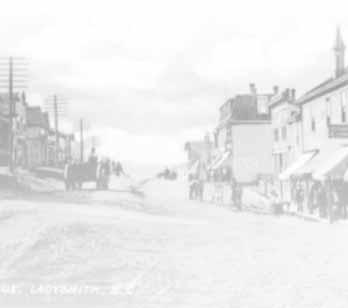






FISH FISH FISH. Buy direct from the guy who caught it! High-quality salmon, lingcod, rockfish. All fish blast frozen at sea. Satisfaction guaranteed! Contact Jim at oceandancer. wallace@gmail.com or 250-245-5957/250-7391123.
COUNTER PERSON. Royal Self Storage is seeking a counter person for slow paced of fice, Saturday and Monday permanent basis. Some basic computer skills; would suit pensioners wanting to augment in-come. Additional hours and income are available periodically by providing holiday relief. Call 250-245-1171.
DARRELL ESSAR RENOVATIONS. Over 35 years’ experience, certified journeyman carpenter. Renova-tions. For free estimate, call Darrell 250-714-3823.
KB HANDYMAN AND YARD WORKS. Minor carpentry work, decks, fences, power washing, tree pruning, yard clean up, lawn fertilizing, mowing. Seniors discount. Contact Karl kbhandymanandyard-works@ gmail.com or 250-714-2738.
HEART LAKE ROOFING for all your roofing repairs 250-668-9195.
ALL ACRES providing all aspects of tree work. Pruning, falling, hedging, dangerous tree removal. Fully insured. Professional work at reasonable rates. Call 250-246-1265.
CONCRETE RESULTS. Foundations, retaining walls, patios, driveways, walks and stairs; full forming and finishing; 40 years’ experience. Gord concreteresults@live.com.

EMPRESS ACRES LITTLE FARM STORE. Pastured eggs & pork; org. cert. produce; raw honey; open 7 days/wk; 2974 Haslam Rd. See Fresh Sheet for updates at www. empressacres.ca; for pork orders, email Marlene at marlene@empressacres.ca or call/text 250-889-1343.
EVERY SUNDAY CAROL’S ARTISANS. Pens, quilting, woodworking, purses, sewing, knitting, jewellery, hats, pottery, clocks, cards, baking, preserves, jams, etc. 13467 Cedar Road; 10am–3pm. New vendors welcome. Contact petespensandmore@ shaw.ca.
TAKE 5 ADS work! Call today, 250-245-7015.
TAI CHI for mental & physical health. Beginner class Monday mornings. Ongoing class every Wednesday morning. For class time and location and more information, visit www.taichinanaimo. org or call Sara 250-245-1466..
PAINTER. Certified Journeyman. Clean, efficient, respectful, punctual; 25+ years’ experience; WCB cov-erage. Enhance your enjoyment of the home you love. Call Howard 250-245-2751.
ISLAND PRUNING. Professional tree care from large scale orchards to budding new trees. I can meet any pruning need. Shrubs, vines and ornamental. Large & small cleanups. Call Darcy Belcourt 250-323-1260.
I CAN EDIT. Copy editing, proofreading, structural editing and more. Fiction or non fiction, web content and eBook prep. For more information, editican@gmail.com.
CROFTON SHOP & WASH Community Thrift Store & Laundromat with large capacity machines; afforda-ble drop-off and pickup services. 1606 Joan Ave., Crofton. Open 9am–7pm; 6 days a week; closed Wednesdays. Call 250-324-2249.












To worship is to show respect, either to an entity or an idea, and there are as many different ways to do that as there are people on earth.
Lisa and Chris Burness of Ladysmith embrace rock as both muse and metaphor when they worship: they are founders of both the Celtic rock band Skellig (Gaelic for “rock”) and the Rock Christian Fellowship, which gathers at the Eagles Hall in Ladysmith every Sunday at 6 p.m. for services.
Indeed, Isaiah 26:4 9 (ESV) states that “the Lord God is an everlasting rock.” Chris and Lisa summarize this sentiment beautifully on their website, where they state, “The journey in our music started from Skellig Michael on Ireland’s west coast. It provides constant inspiration, standing as a rock against the ever-shifting sea. Our music comes from our heart and soul, providing a source of encouragement and hope to all who will take time to listen.”
Skellig has been a Celtic rock staple in Ladysmith for 17 years, but got its start in 1993 when the Burness’s lived in South Africa and then the United Kingdom. Lisa and Chris have written a lot of Skellig’s music, much of which is faithbased, but they also play a lot of secular tunes and covers, in particular Led Zeppelin.
While they are perhaps most known for their success in the Hard Rock Rising Finals and nominations for the Vancouver Island Awards, these musicians have loads of experience playing nightclubs, weddings, private events and festivals. They have written and produced many original tracks, and their music can often be heard on radio, TV and in film.
When this family-based band isn’t practising or performing, they are preparing for weekly services at Eagles Hall. The Rock Christian Fellowship is affiliated with the Evangelical Free Church of Canada, and Chris says the services are “informal, friendly and low-key.” Newcomers are always welcome, and the Fellowship — which is run as a lay society — has no professional staff. Any money that comes in is used to help others, says Chris.

But just how did the Fellowship get its start?
In 2008, Lisa and Chris started to gather once a week with other band members for prayer meetings and bible study. Although most of them belonged to larger churches, they were all seeking something more informal and intimate. Music, of course, was part of each service, but so too was discussion and a teaching or lesson.
Over the years, as more people joined the Fellowship, the group needed a larger space for its weekly meetings, hence the Eagles Hall. And the group itself expanded: children were always included in the Sunday Service, but there is now a youth group for kids 6 to 19 years of age, regular prayer meetings, potlucks, fundraisers and online mediations.
Chris believes Skellig is a beautiful extension of who he and Lisa are as Christians.
“Music is an expression of love for our God, each other and life itself,” says Chris. “People have been raising their voices in praise and joy since the beginning of time. What we are doing is no di fferent. It just has a slightly Irish lilt to it!”
The new year has brought a new focus for Skellig. While Celtic rock is their passion, they are currently working on a meditation project, featuring new music and spoken word, to be released in early 2025.
Lisa has this to say of amalgamating music and worship: “A lot of people love music and connect through it, so it’s a great vehicle for faith. At the same time, the purpose of fellowship is connection, with each other and being part of something that’s outside of yourself. But the Fellowship is not performance. It’s about enabling the congregation to come to a place where everything else of the world drops away, where you praise God and affirm the truth of what you believe.”
Chris acknowledges that, to date, “Happy in My Skin” is his favourite track, although “Captive” — a love song to God and his wife — gives him chills whenever he plays it.
To fi nd out for yourself what Skellig and the Rock Christian Fellowship have to offer, visit their website or Facebook pages. The music of Skellig is also available to download from Bandcamp, on Spotify, Apple music, iTunes and other digital platforms.
I once again witnessed a large dog lift its leg and empty its bladder on a sidewalk sign at Nanaimo’s waterfront. It is a constant struggle for me to keep the dogs that I am walking from trying to answer the pee-mail on the lampposts, benches, signs, garbage cans and other solid pieces of landscape. I just say, “Leave it,” and keep walking, but it is annoying to me that other people allow their dogs to just do their business anywhere. These are the same people who let their dogs go on the neighbours’ lawns, flowers, garbage cans, tires, etc. So, I thought maybe a reminder of basic respect might be in order.
1. Keep your dogs on the pavement not on your neighbours’ property.
2. Allow your dogs to sni ff and do their business in common areas only. Try to go there fi rst on your walk.
3. Pick up after your dog.
4. Don’t throw the bag of do-do into

the bushes or your neighbours’ property. Dispose of them in the proper garbage cans.
5. Don’t allow your dog to cock his leg on planters, mailboxes, lamp posts, sidewalk signs or anything other than wild bushes in the common areas. Teach him to “leave it” and keep on walking.
6. When walking your dog, call out to others approaching with dogs to ask if their dog is friendly. If it is, then if you wish, ask if it is okay for the dogs to interact and have some fun. If not, please respect that and distance your dog from theirs.
7. Ask fi rst if it is okay to pet someone’s dog.
8. When in an off-leash playpark, watch your dog and intervene if he is bullying or getting bullied.
9. Teach your dog the “sit,” “down,” “stay,” “wait” and “okay” commands. You will then be welcomed at many restaurant patio areas. Respect the rules of the management.
Working together, we can ensure the safety and respect for ourselves, our neighbours and our dogs.


